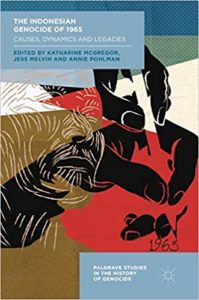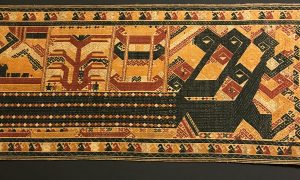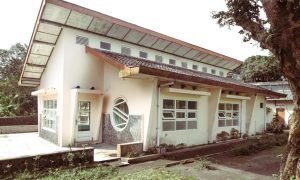I don’t often start these blog posts with comments about the cover art. But the reproduction of Alit Ambara’s “After 1965,” featured on the cover of the new set of essays The Indonesian Genocide of 1965: Causes, Dynamics and Legacies (Palgrave Macmillan, 2018), fits the subject perfectly. The piece compels your gaze, while resisting easy interpretations and answers.
I found the book much the same. The essays, edited by Katharine McGregor, Jess Melvin, Annie Pohlman, demand attention. Roughly divided into two sections, they range from military/political analyses to contemplations about the way the genocide left its mark on individuals and communities to reflections on the failures of the Indonesian state to acknowledg e its complicity. Each individual essay informs and challenges. I have a new appreciation of the nature of the Genocide Convention and the ways it can be interpreted after reading. Annie Pohlman and Jess Melvin’s essay on the logic for calling the killings genocide And the pieces on efforts by visual artists (by Kate McGregor) and puppeteers (by Marianna Lis) left me running to google to learn more. As I said in the interview, I learned an enormous amount from the book.
e its complicity. Each individual essay informs and challenges. I have a new appreciation of the nature of the Genocide Convention and the ways it can be interpreted after reading. Annie Pohlman and Jess Melvin’s essay on the logic for calling the killings genocide And the pieces on efforts by visual artists (by Kate McGregor) and puppeteers (by Marianna Lis) left me running to google to learn more. As I said in the interview, I learned an enormous amount from the book.
But collectively the essays are also a call to action. As you’ll hear in the interview, the editors are clear-eyed about the long-term consequences of the violence and the failures of Indonesians to address this. Fifty years on, the struggle to understand the genocide and address its consequences continues.
This podcast is part of a short series on the mass atrocities in Indonesia. Last month, I talked with Geoff Robinson about his book The Killing Season. In the months to come, I’ll be speaking with Jess Melvin and Vannessa Hearman about their research on killings.
Listen to the podcast here:
(Duration: 36:30 — 33.4MB)
You may also be interested in:
Geoffrey Ronbinson, The Killing Season: A History of Indonesian Massacres, 1965-1966
Roderic Boradhurst, Thierry Bouhours, and Brigitte Bouhours, Violence and the Civilising Process in Cambodia
 Facebook
Facebook  Twitter
Twitter  Soundcloud
Soundcloud  Youtube
Youtube  Rss
Rss 

